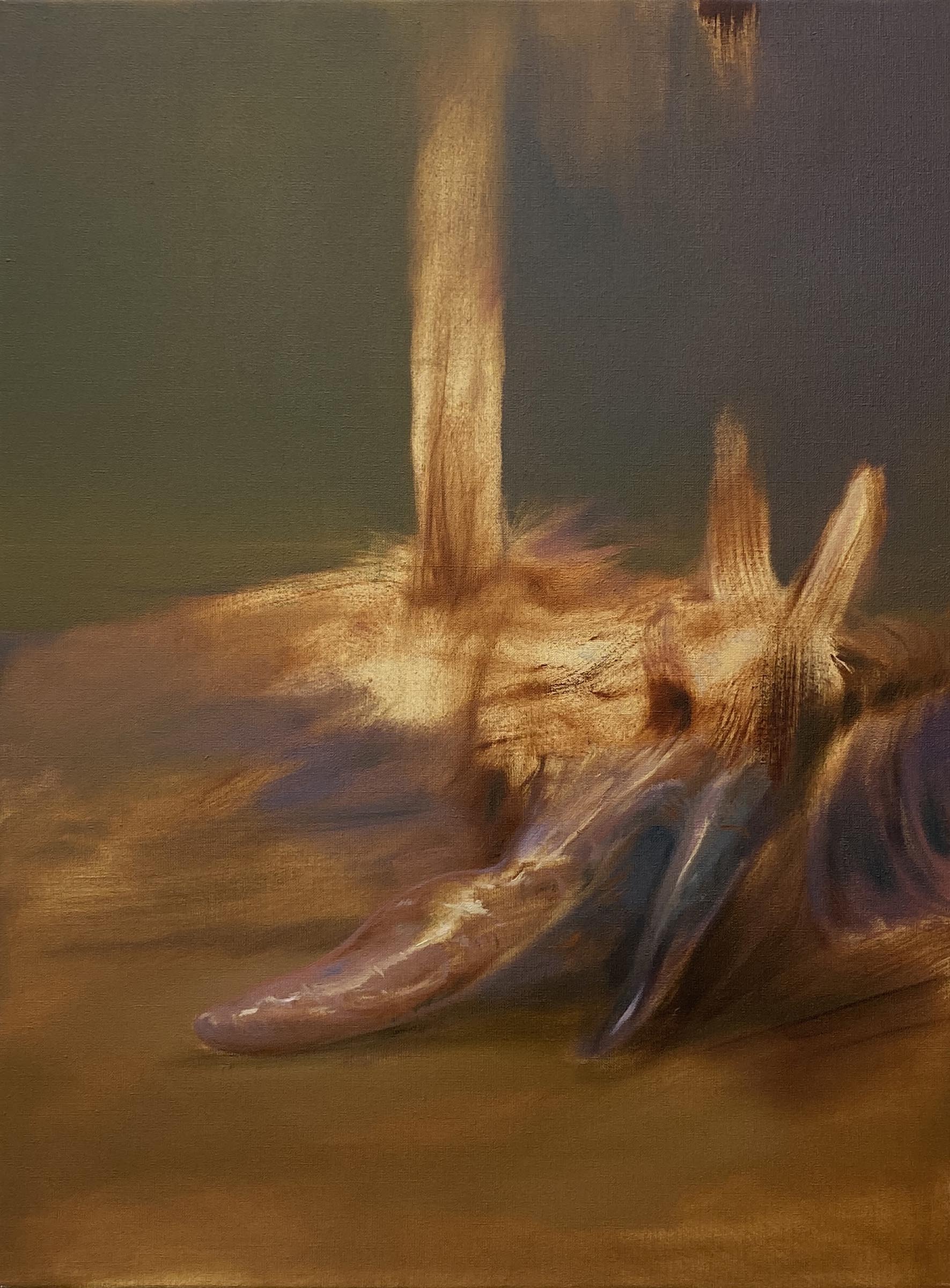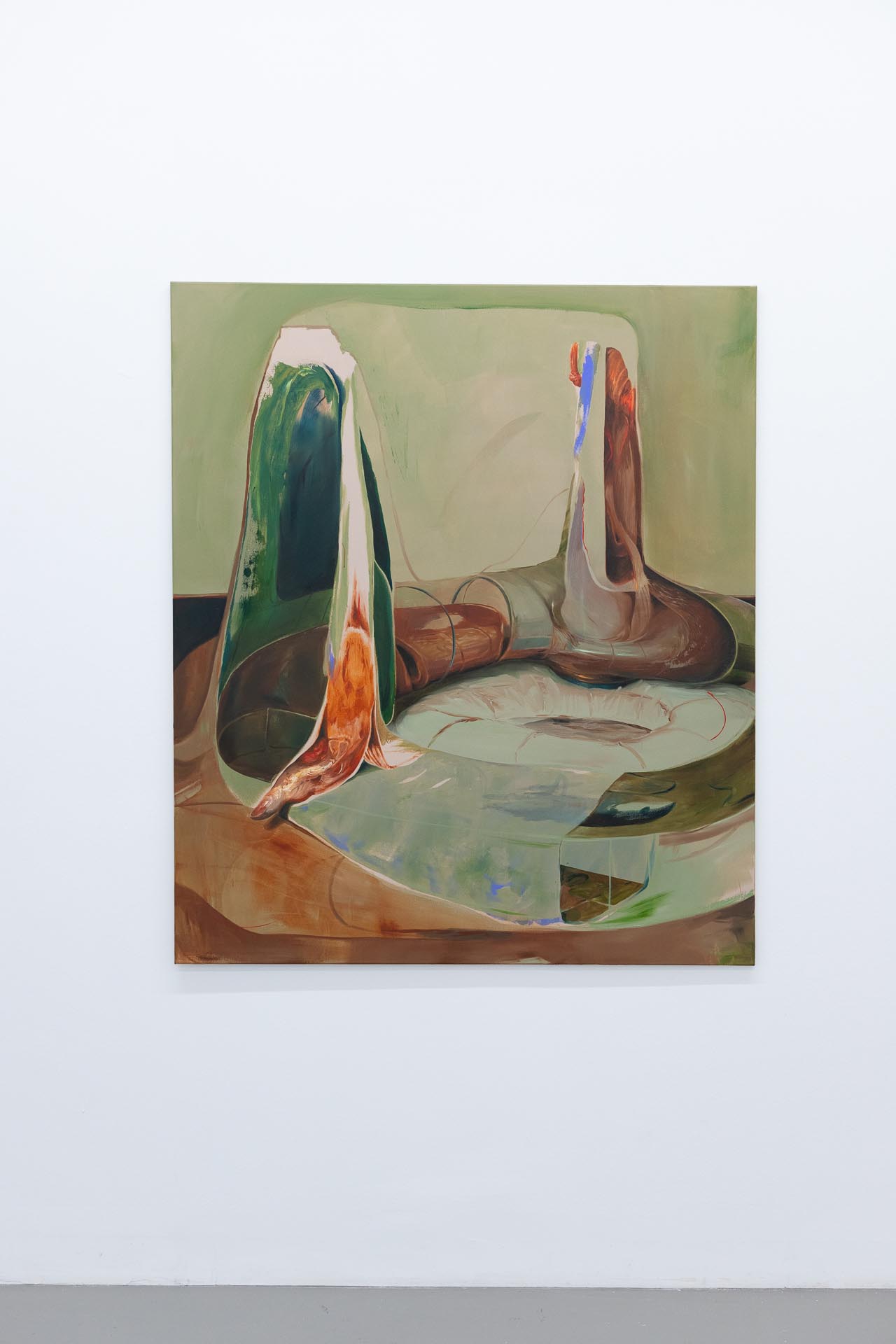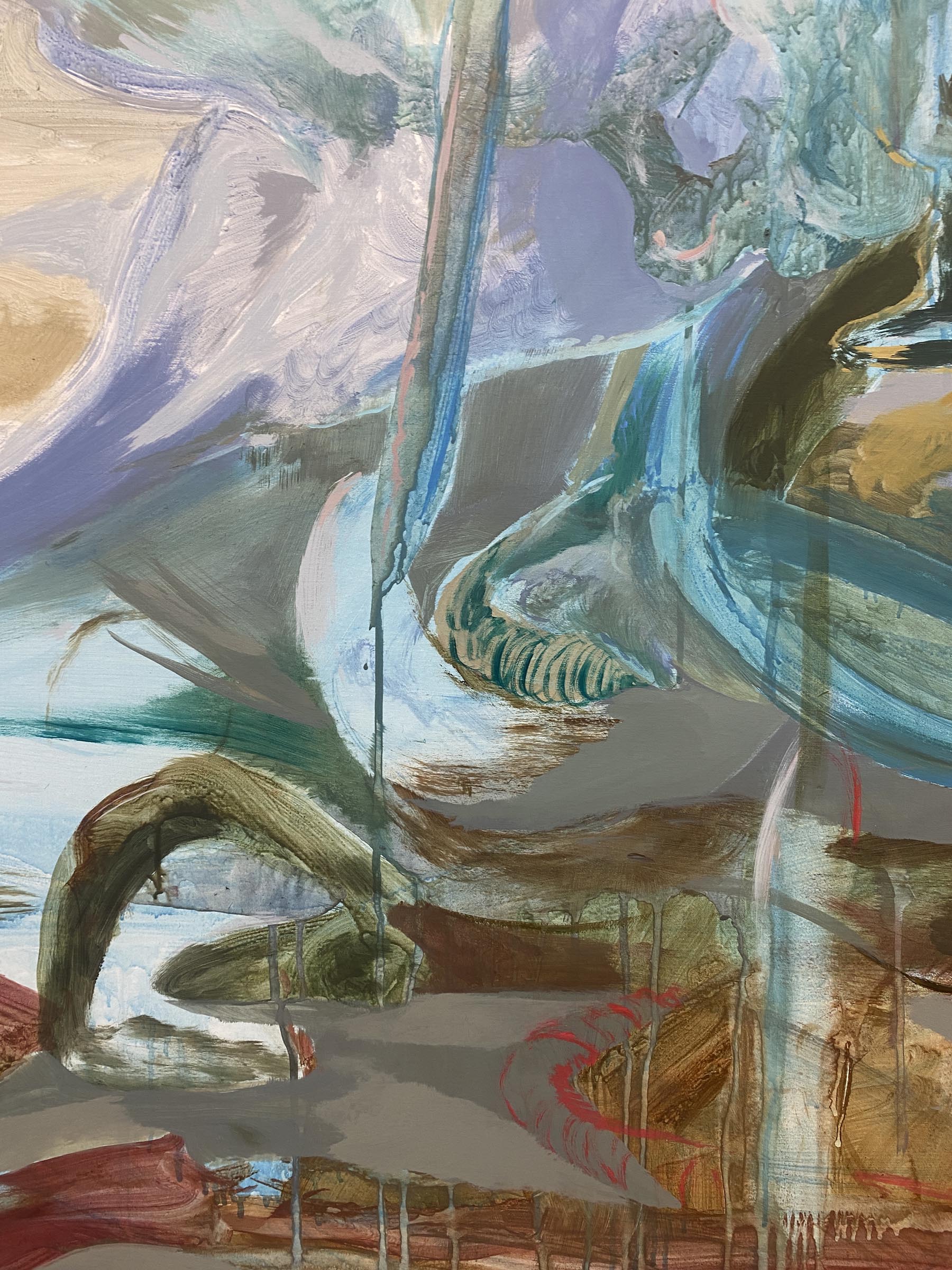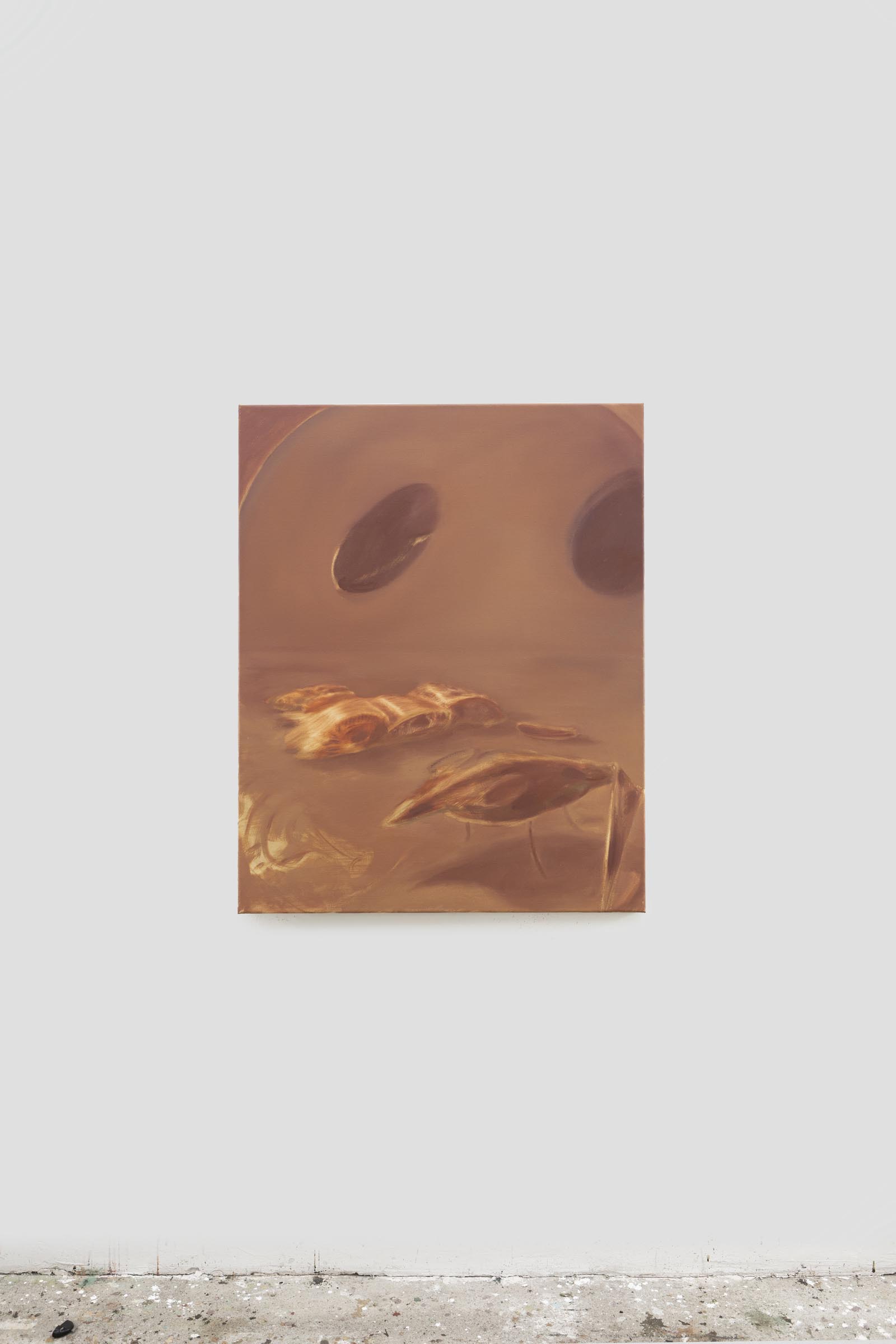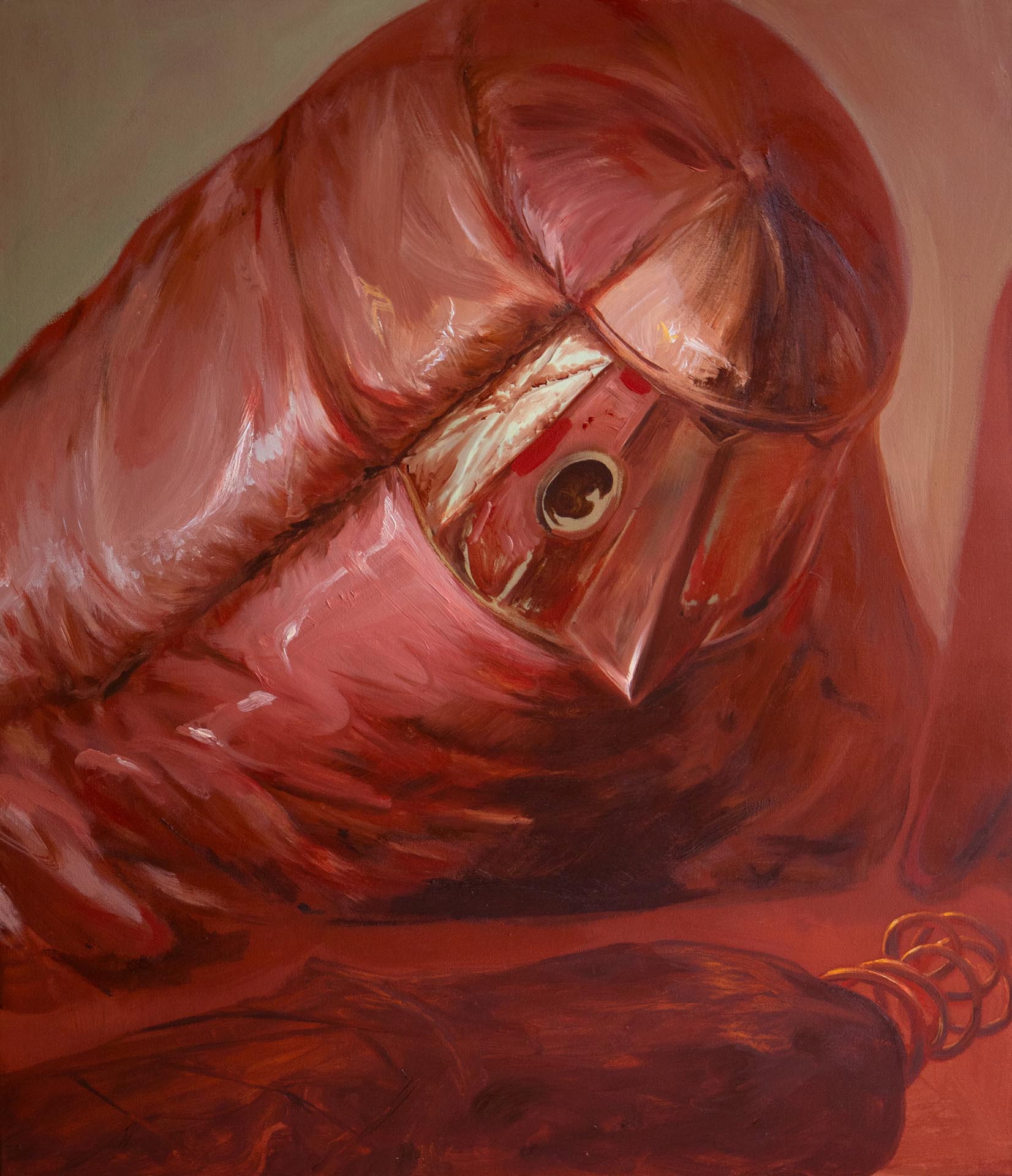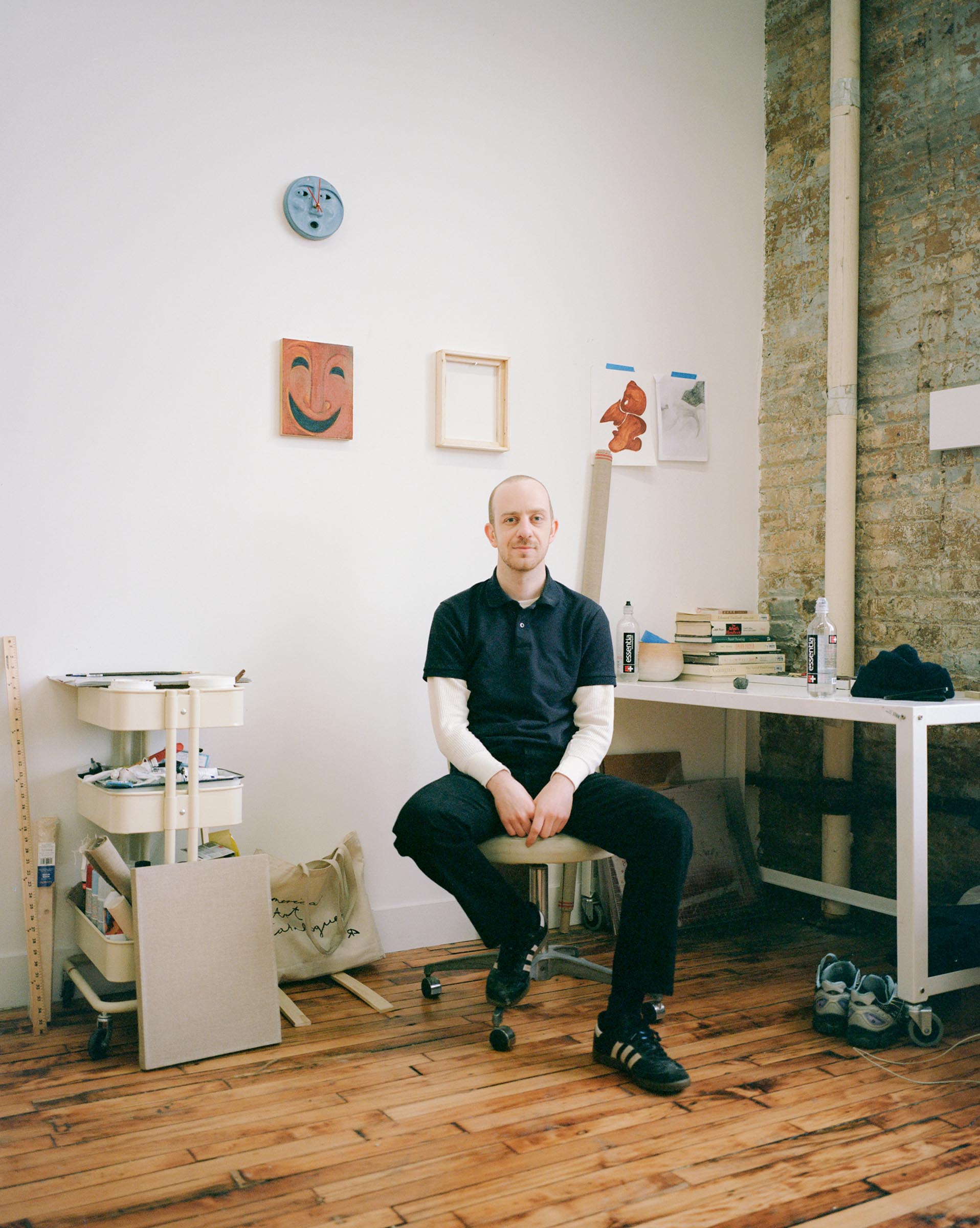How did you get into making art?
I have been interested in drawing and painting since I can remember. I’ve always needed to create, especially two-dimensional for some reason. At some point, as a teenager, I was actively exploring several things, such as photography, designing and sewing, sketchbook drawing, and digital photo manipulation in Photoshop. I had supportive parents, so I was lucky to have access to the necessary material to try, explore, and develop over time. By studying fine arts, all the crafts became my tools, and the creative process per se began.
What are you currently working on?
At the moment I’m working on a new series of paintings for my next solo exhibition which will happen in January 2024 in Lisbon, at Bruno Múrias Gallery.
Parallelly I’m also working on other projects such as art fairs and a group show in Berlin, happening this year.
The fine line between opposites became one of the main parts of my work – in other words, navigating between contrasting realms – such as figuration and abstraction, or natural and artificial.
Teresa Murta
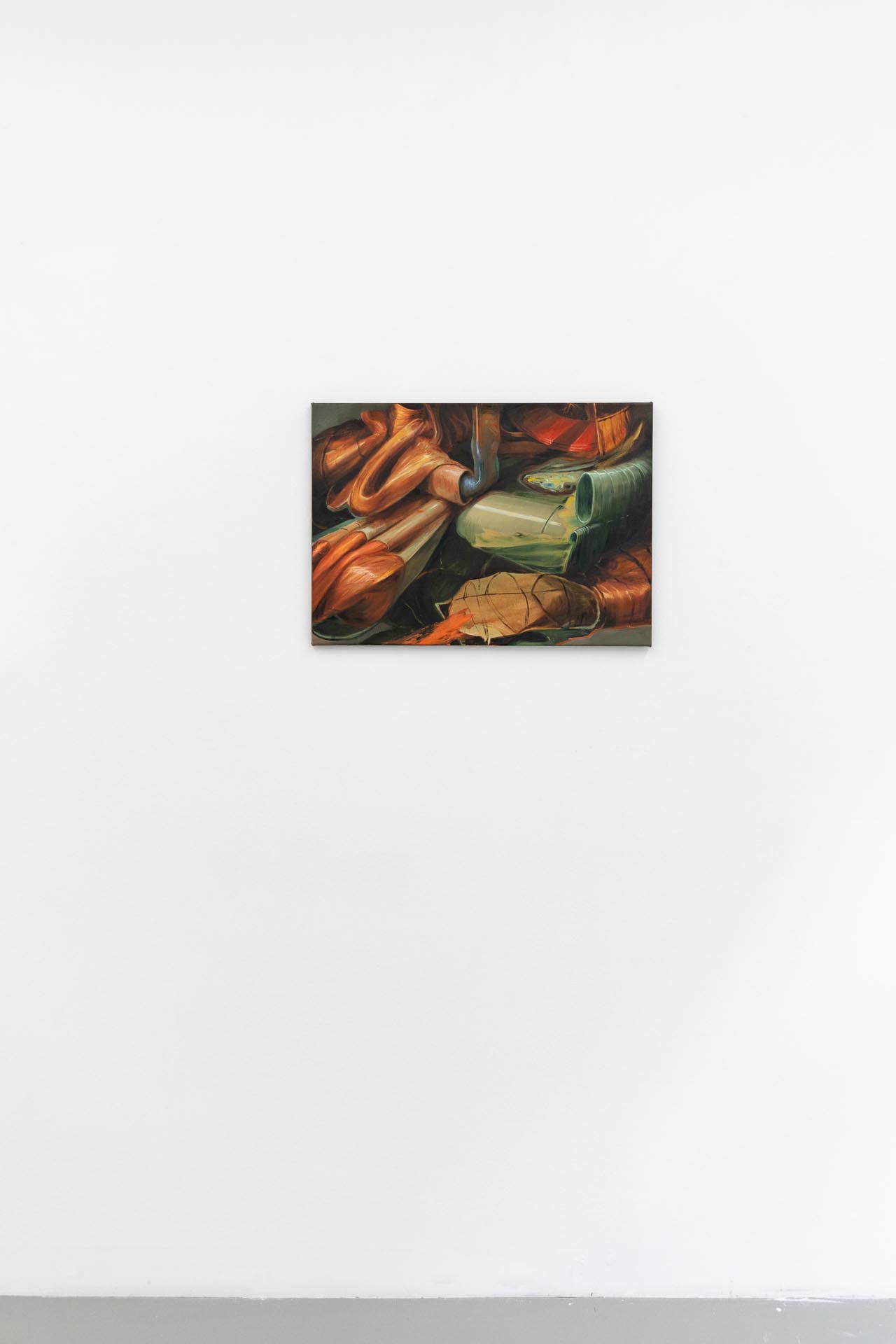
What inspired you to get started on this body of work?
In my point of view, my body of work has changed over time, maybe because that is one of the things that keep me going – change, accident, error, and surprise. Back in university I was at some point challenged, as an exercise at first, to break free from figuration exactly because I was very good at it. I quickly became more and more interested in the search for the unexpected and, therefore more and more bored by the attempt to represent reality.
That process, which I’m not able to fully describe, of breaking free from the thing I knew best, being curious about the unknown and eager for change and surprise, turned out to be more fulfilling than the ability of nemesis. Fortunately, in that process, I found endless things to work with.
The fine line between opposites became one of the main parts of my work – in other words, navigating between contrasting realms – such as figuration and abstraction, or natural and artificial.
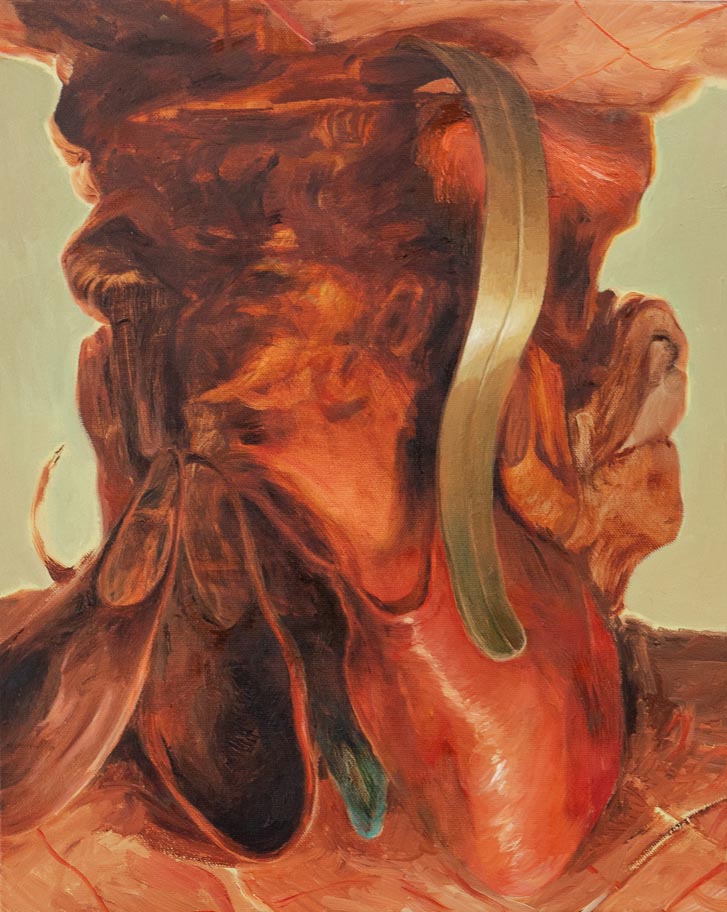
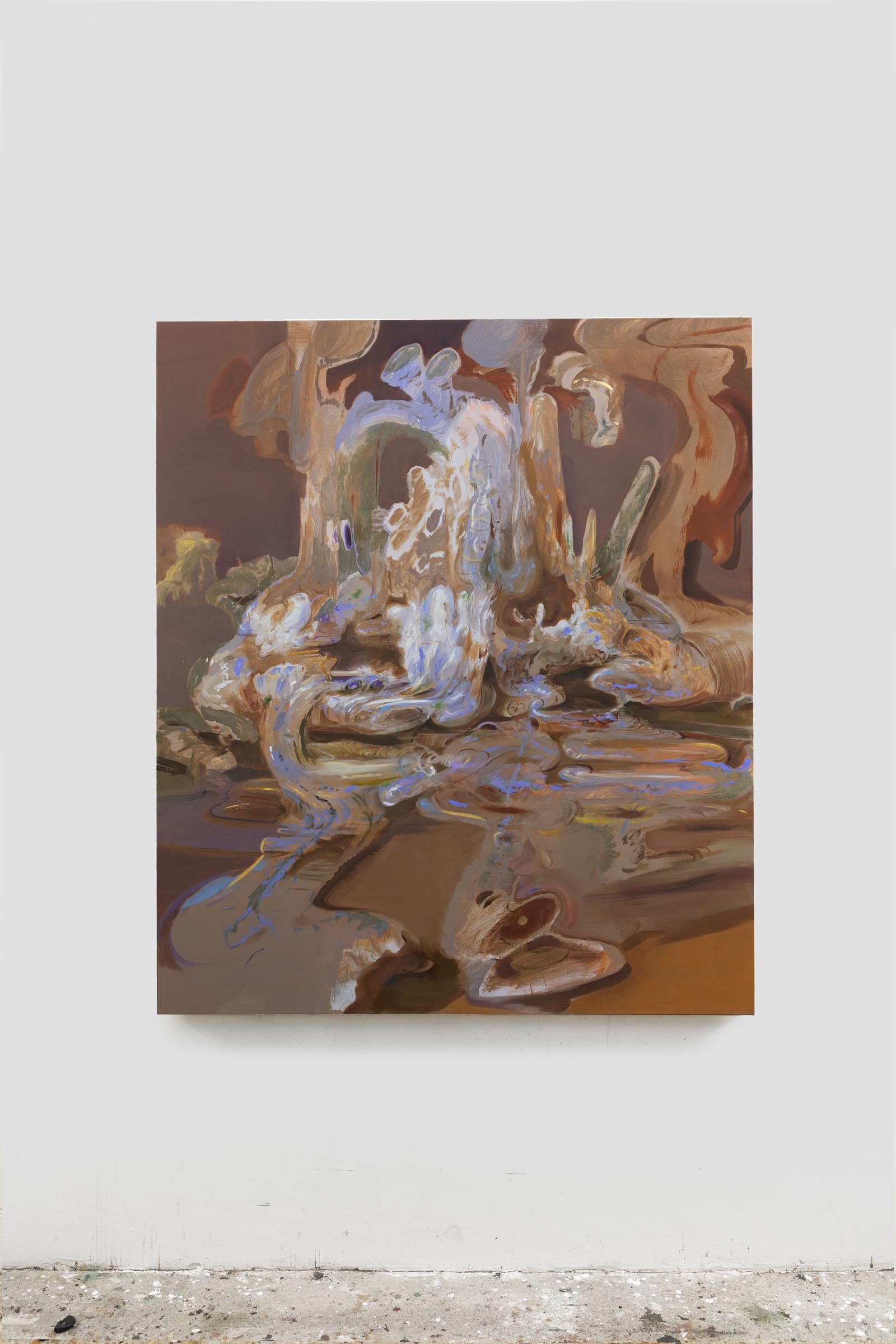
Do you work on distinct projects or do you take a broader approach to your practice?
Usually, I work on several paintings at the same time which I intend to show together as a series in an upcoming exhibition. I don’t see them as totally independent works when looking at my whole body of work, though I reckon they are connected to a different and deeper extent.
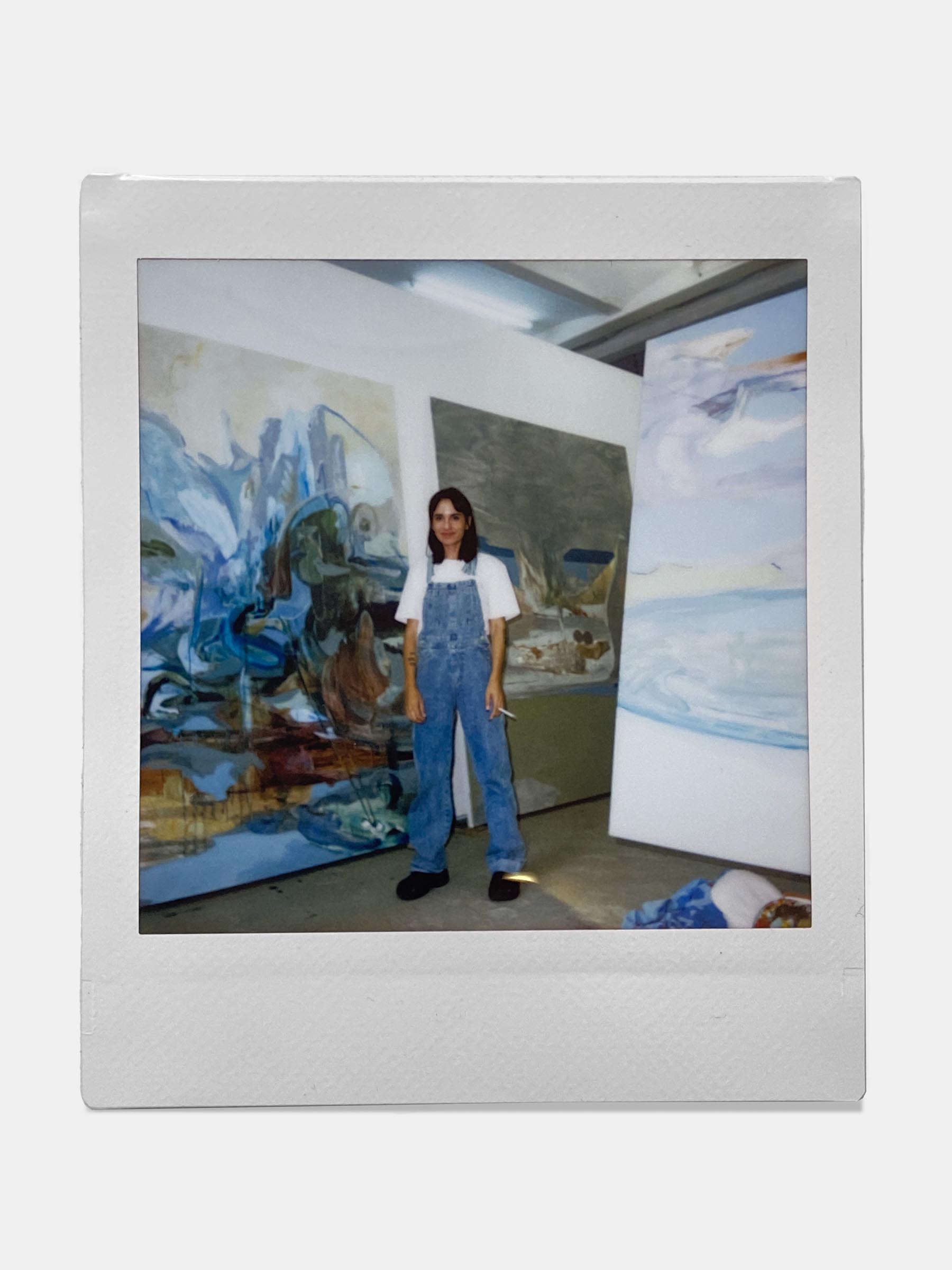
What’s a typical day like in your studio?
I arrive between 10 a.m. to noon after a 40-minute commute from home, a double espresso, and a cigarette.
Fortunately, my current studio has a lot of natural light and space for a proper desk, so I happily start with some desk work, such as replying to emails or updating my website – something that I would do at home or a cafe.
Then, either I immediately dress up in studio clothes and start painting, or I spend some time organizing materials, washing my brushes from the day before or I go outside for a smoke. Sometimes that is it. I don’t have weekdays at the moment, since I recently became a full-time artist, every day can be a working day so every day can also be my day off.
I can paint for hours in a row and only when my body complains I stop to eat or drink. I’m never really happy to leave the studio, actually, I would love to live where I paint, so I found these strategies that make me finish the session more promptly, like having social plans late afternoon or going to a dance class for instance.
I’m happy to have artist friends in the studios next to mine so I also take some breaks to chat now and then.

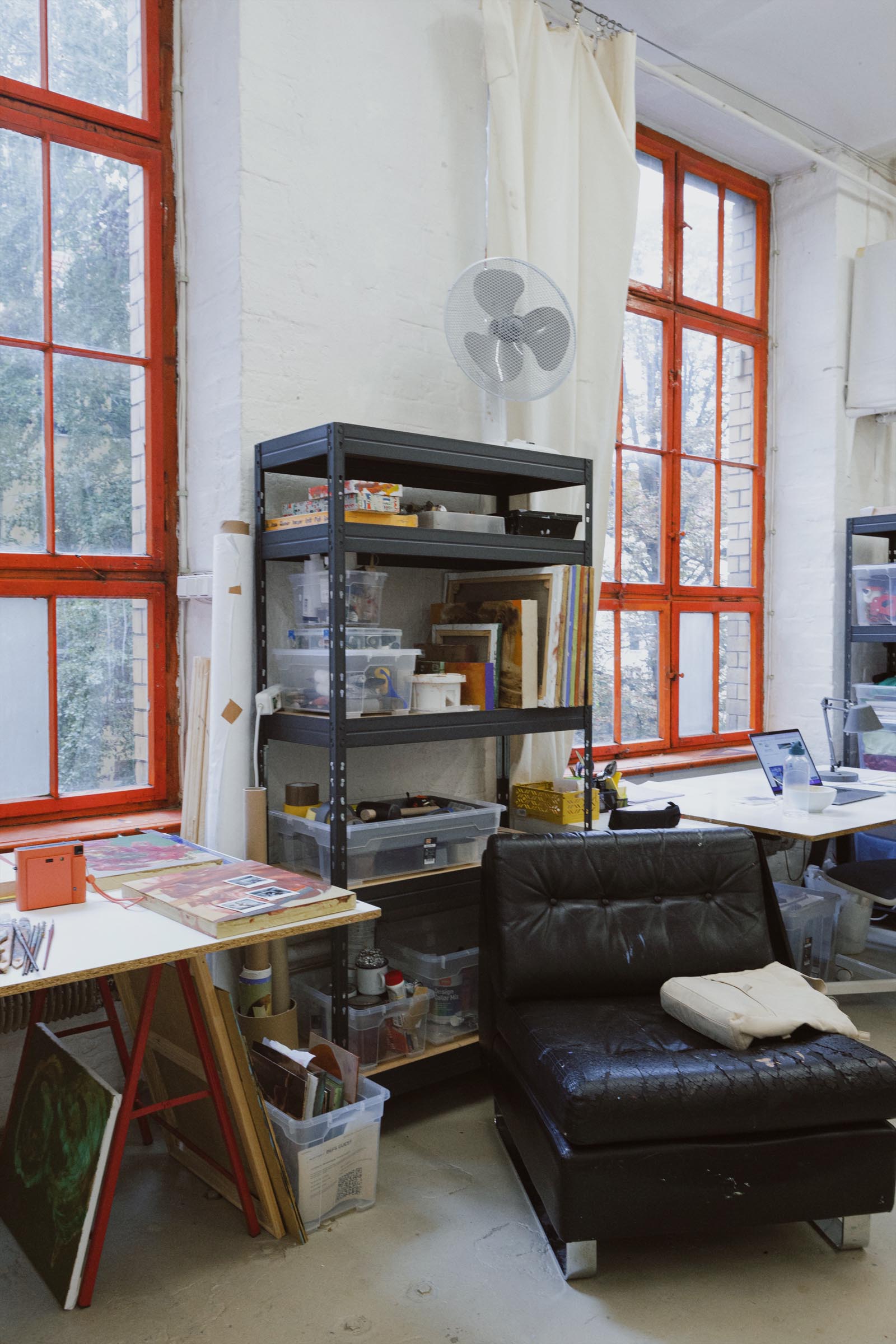
Who are your favorite artists?
Francis Bacon is my number one. I relate to the readings about his process and his interviews and I look up to his body of work as an example of boldness, assertiveness, organized chaos and irrationality all combined. I know many artists resonate with his process or way of thinking about painting and yet the outcomes of our works are completely different – I find that amazing. Contemporary artists whose work I like and actively follow closely are the Romanian artist Adrien Gehnie, the German Neo Rauch, and the Portuguese Gonçalo Pena and Jorge Queiroz.
Where do you go to discover new artists?
Mostly via instagram.
Learn more about the artist by visiting the following links:

